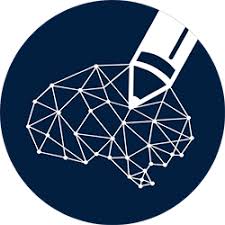Source – enterprisetech.com
Artificial Intelligence and Deep Learning are being used to solve some of the world’s biggest problems and is finding application in autonomous driving, marketing and advertising, health and medicine, manufacturing, multimedia and entertainment, financial services, and so much more. This is made possible by incredible advances in a wide range of technologies, from computation to interconnect to storage, and innovations in software libraries, frameworks, and resource management tools. While there are many critical challenges, an open technology approach provides significant advantages.
The Scaling Challenge
The full deep learning story, though, must be an end-to-end technology discussion and encompass production at scale. As we scale out deep learning workloads to the massive compute clusters required to tackle these big issues, we begin to run into the same challenges that hamper scaling of traditional high-performance computing (HPC) workloads.
Ensuring optimal use of compute resources can be challenging, particularly in heterogeneous architectures that may include multiple central processing unit (CPU) architectures, such as x86, ARM64, and Power, as well as accelerators, such as graphical processing units (GPUs), field programmable gate arrays (FPGAs), tensor processing units (TPUs), etc. Architecting an optimal deep learning solution for training or inferencing, with potentially varied data types, can result in the application of one or more of these architectures and technologies. The flexibility of open technologies allows one to deploy the optimal platform at server, rack, and data center scales.
One of the most important uses of deep learning is in gaining value from large data sets. The need to effectively manage large amounts of data, which may have varying ingest, processing, and persistent storage and data warehouse needs, is at the center of a modern deep learning solution. The performance requirements throughout the data workflow and processing stages can vary greatly, and, at production-scale, it can simultaneously involve data collection, training, and inference. The balance of cost effectiveness and high performance is key to providing a properly-scaled deployment. The flexibility of open technologies, allows one to take a software-designed data center approach to the deep learning environment.
Workload orchestration is another familiar challenge in the HPC realm. A variety of tools and libraries have been developed over the years, including resource managers and job schedulers, parallel programming libraries, and other software frameworks. As software applications have grown in complexity, with rapidly evolving dependencies, a new approach has been needed. One such approach is containerization. Containers allow applications to be bundled with their dependencies and deployed on a variety of compute hosts. However, challenges have remained for providing access to compute, storage, and other resources. Moreover, managing the deployment, monitoring, and clean-up of containerized applications presents its own set of challenges.
The Open Technology Approach
Penguin Computing applies its decades of expertise in high-performance and scale-out computing to deliver deep learning solutions that support customer workload requirements, whether at development or production scales. Penguin Computing solutions feature open technologies, enabling design choices that focus on meeting the customer’s needs.
In the Penguin Computing AI/DL whitepaper, you will learn more about our approach to:
- Open Architectures for Artificial Intelligence and Deep Learning, combining flexible compute architectures, rack scale platforms, and software-defined networking and storage, to provide a scalable software-defined AI/DL environment.
- Discuss AI/DL strategies, providing insight into everything from specialty compute for training vs. inference to Data Lakes and high performance storage for data workflows to orchestration and workflow management tools.
- Deploying the AI/DL environments from development to production scale and from on-premise to hybrid to public cloud.
